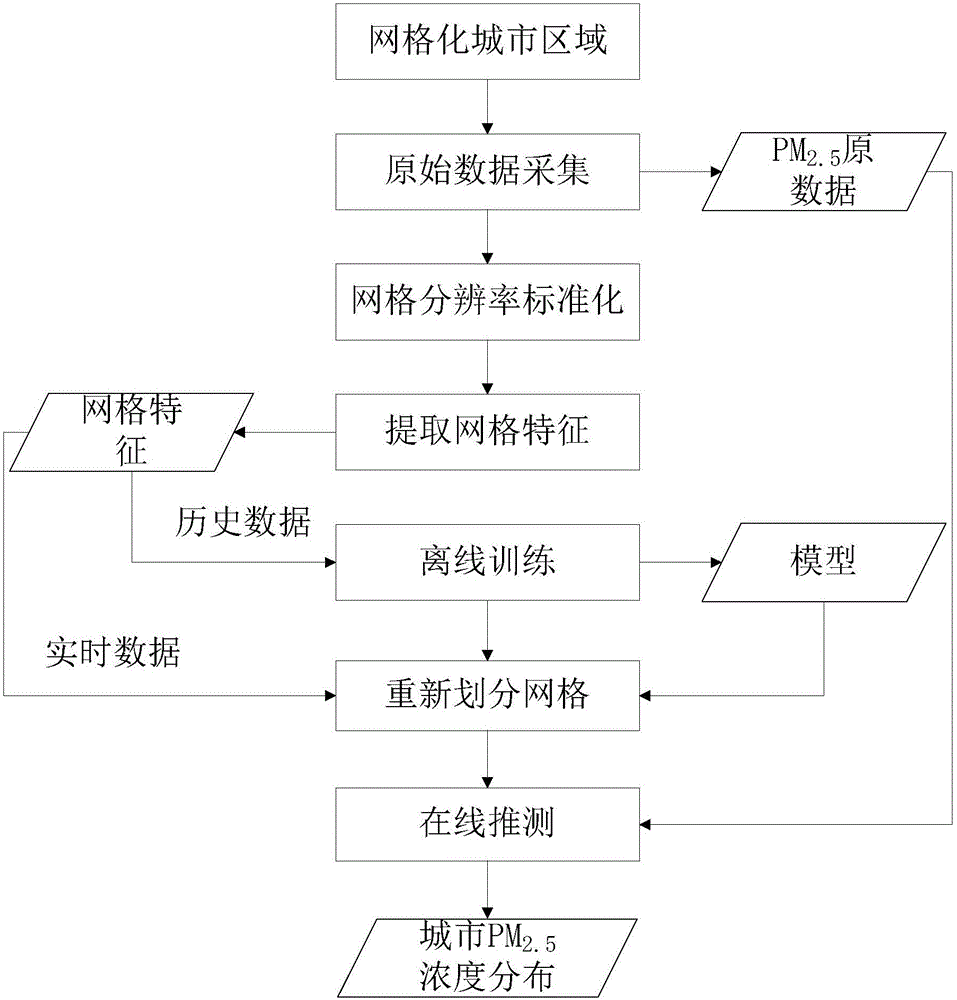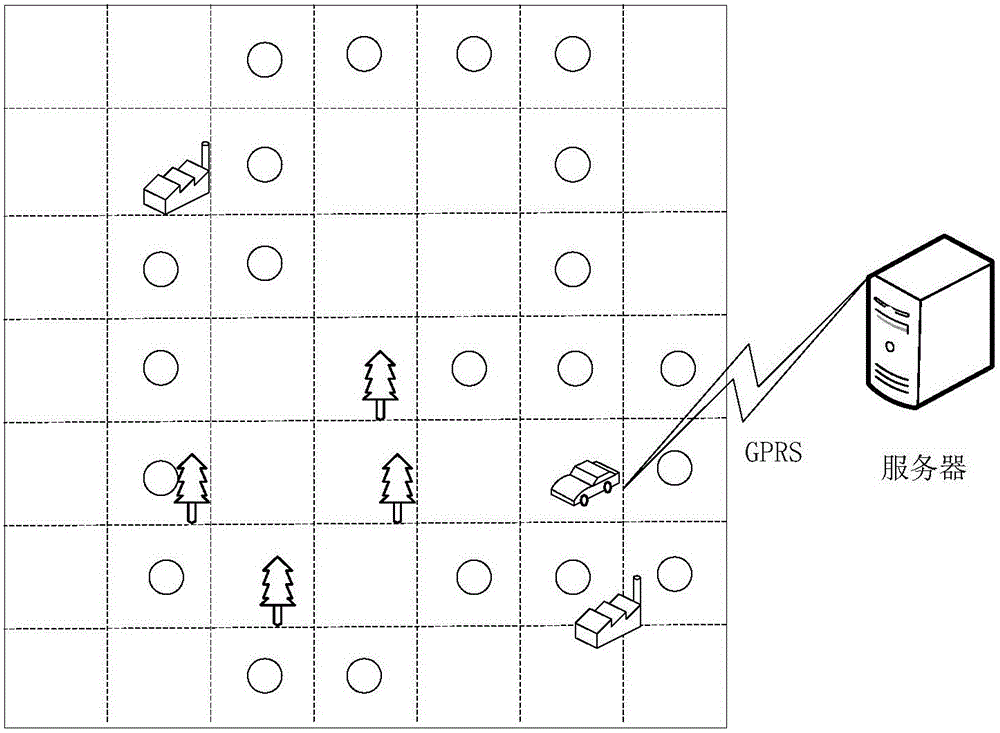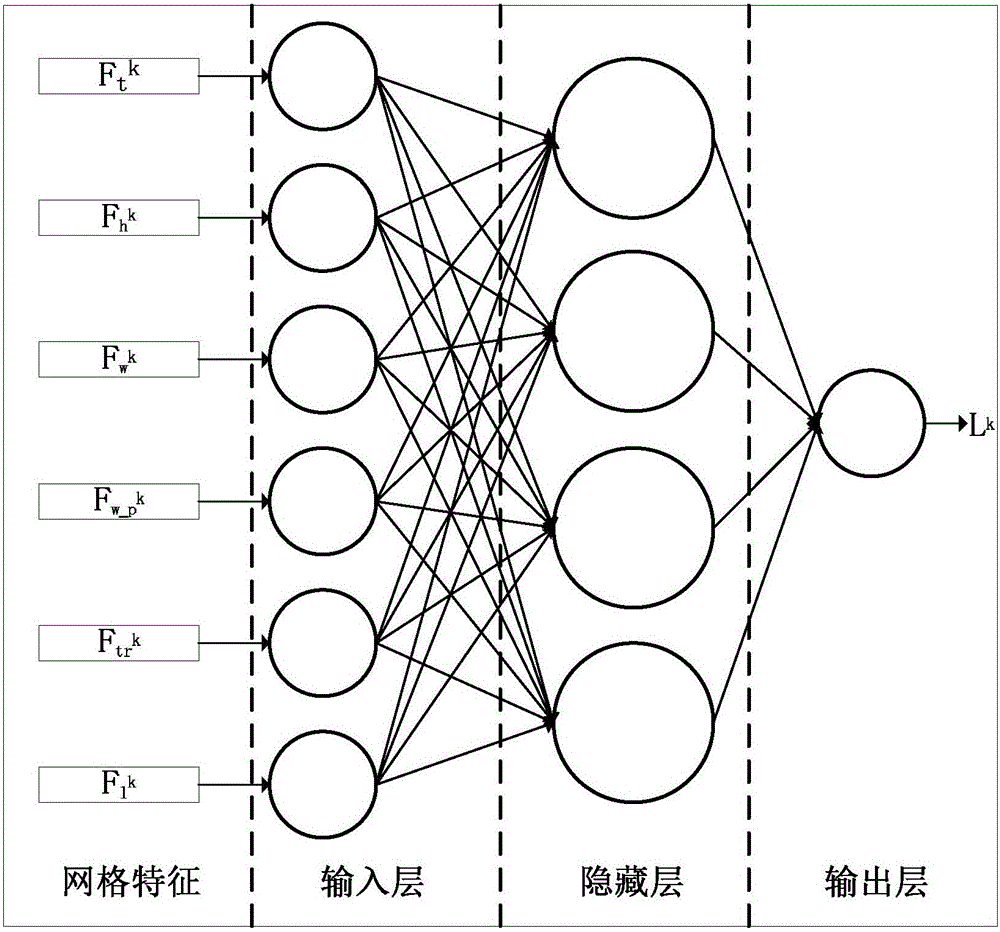Self-adaptive PM<2.5>concentration speculating method based on city region grid
An urban area, self-adaptive technology, applied in the direction of measurement devices, biological neural network models, special data processing applications, etc., to achieve the effects of reducing computational complexity, improving urban environmental quality, and strong scalability
- Summary
- Abstract
- Description
- Claims
- Application Information
AI Technical Summary
Problems solved by technology
Method used
Image
Examples
Embodiment Construction
[0042] The present invention will be further described below in conjunction with accompanying drawing.
[0043] Such as figure 1 As shown, a PM based on urban area grid adaptation 2.5 The specific steps of the concentration estimation method are:
[0044] Step (1), urban area gridding, and urban PM collection 2.5 Raw data. Such as figure 2 As shown, the urban area is divided into an initial resolution grid of 500m*500m, and the PM is installed on the roof 2.5 The taxis of the collection equipment randomly drive on urban roads, and collect PM in urban areas 2.5 Concentration data, and transmit the real-time collected data to the server through General Packet Radio Service (GPRS). The circle grid in the figure represents the grid covered by the vehicle, that is, PM 2.5 A grid of raw data.
[0045] Step (2), grid resolution standardization. The method of the present invention defines 4 grids with different resolutions, namely 1000m*1000m, 500m*500m, 250m*250m, 125m*125m, a...
PUM
 Login to View More
Login to View More Abstract
Description
Claims
Application Information
 Login to View More
Login to View More - R&D
- Intellectual Property
- Life Sciences
- Materials
- Tech Scout
- Unparalleled Data Quality
- Higher Quality Content
- 60% Fewer Hallucinations
Browse by: Latest US Patents, China's latest patents, Technical Efficacy Thesaurus, Application Domain, Technology Topic, Popular Technical Reports.
© 2025 PatSnap. All rights reserved.Legal|Privacy policy|Modern Slavery Act Transparency Statement|Sitemap|About US| Contact US: help@patsnap.com



